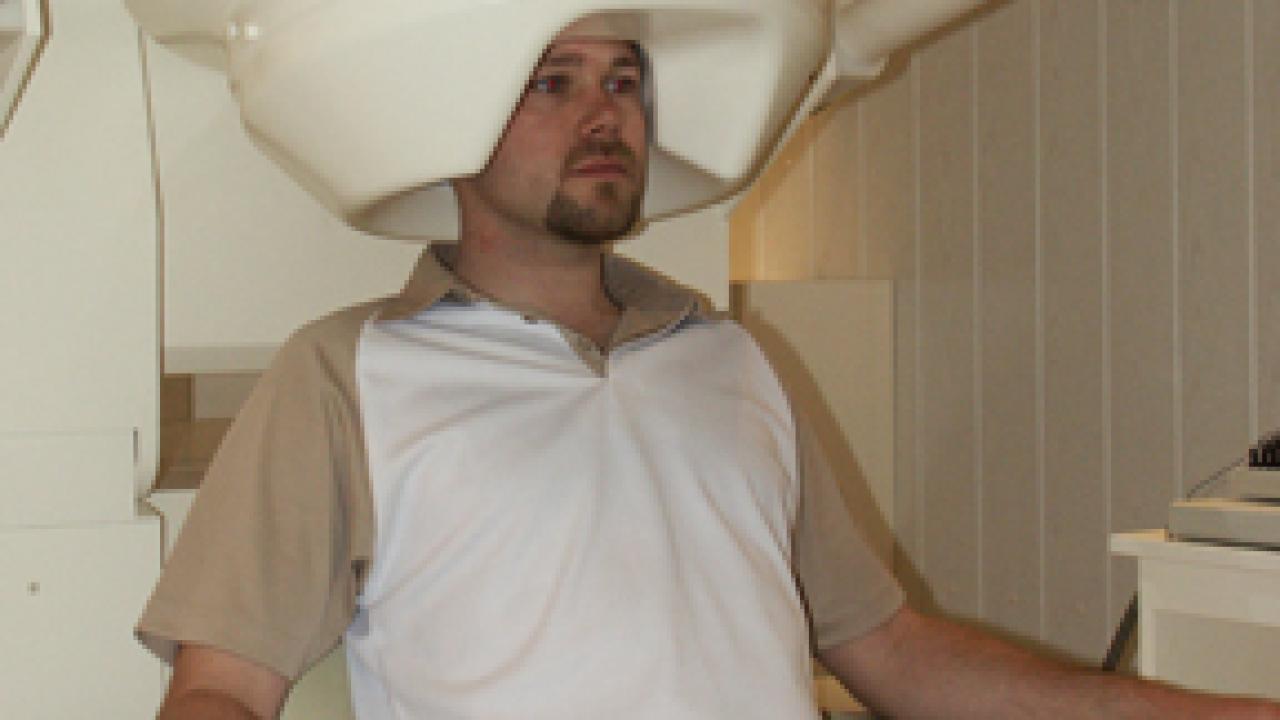From spilling a cup of coffee to failing to notice a stop sign, everyone makes an occasional error due to lack of attention. Now a team led by a UC Davis researcher, in collaboration with the Donders Institute in the Netherlands, has found a distinct electric signature in the brain that predicts when such an error is about to be made.
The discovery could prove useful in a variety of applications, from developing monitoring devices that alert air traffic control operators that their attention is flagging, to devising new strategies to help children cope with attention deficit hyperactivity disorder. The research is posted online, on the Human Brain Mapping journal’s Web site, and is scheduled to be included in the journal’s special issue highlighting innovations in electromagnetic brain imaging, due out in May.
How the brain responds to mistakes has been the subject of numerous studies, said Ali Mazaheri, a research fellow at the UC Davis Center for Mind and Brain. “But what I was looking for was the state the brain is in before a mistake is made,” he said, “because that’s what can tell us what produces the error.”
Working with colleagues at the Donders Institute for Brain, Cognition and Behavior at Radboud University, where he was a Ph.D. student at the time, Mazaheri recruited 14 students into his study. While they took an attention-demanding test, Mazaheri recorded their brain activity using magnetoencephalography, or MEG, a noninvasive brain-wave recording technique similar to, but more sensitive than electroencephalography, or EEG, the technique commonly used in hospitals to detect seizures.
The test, known as the “sustained attention response task,” was developed in the 1990s to evaluate brain damage, ADHD and other neurological disorders. As participants sit at a computer for an hour, a random number from 1 to 9 flashes onto the screen every two seconds. The object is to tap a button as soon as any number except 5 appears.
The test is so monotonous, Mazaheri said, that even when a 5 showed up, his subjects spontaneously hit the button an average of 40 percent of the time.
By analyzing the MEG data, the research team found that about a second before these errors were committed, brain waves in two regions were stronger than when the subjects correctly refrained from hitting the button. In the back of the head (the occipital region), alpha wave activity was about 25 percent stronger, and in the middle region, the sensorimotor cortex, there was a corresponding increase in the brain’s mu wave activity.
“The alpha and mu rhythms are what happen when the brain runs on idle,” Mazaheri said. “Say you’re sitting in a room and you close your eyes. That causes a huge alpha rhythm to rev up in the back of your head. But the second you open your eyes, it drops dramatically, because now you’re looking at things and your neurons have visual input to process.”
The team also found that errors triggered immediate changes in wave activity in the front region of the brain, which appeared to drive down alpha activity in the rear region. “It looks as if the brain is saying, ‘Pay attention!’ and then reducing the likelihood of another mistake,” Mazaheri said.
Incorporating these findings into practical applications should not take too many years, Mazaheri said. For example, a wireless EEG could be deployed at an air traffic controller’s station to trigger an alert when alpha activity is beginning to regularly exceed a certain level.
Another possibility: new therapies for children with ADHD. “Instead of watching behavior — which is an imprecise measure of attention — we can monitor these alpha waves, which tell us that attention is waning,” Mazaheri said. “And that can help us design therapies as well as evaluate the efficacy of various treatments, whether it’s training or drugs.”
Collaborating in the study were Ingrid Nieuwenhuis, Hanneke van Dijk and principal investigator Ole Jensen, all at the Donders Institute.
Media Resources
Dave Jones, Dateline, 530-752-6556, dljones@ucdavis.edu
